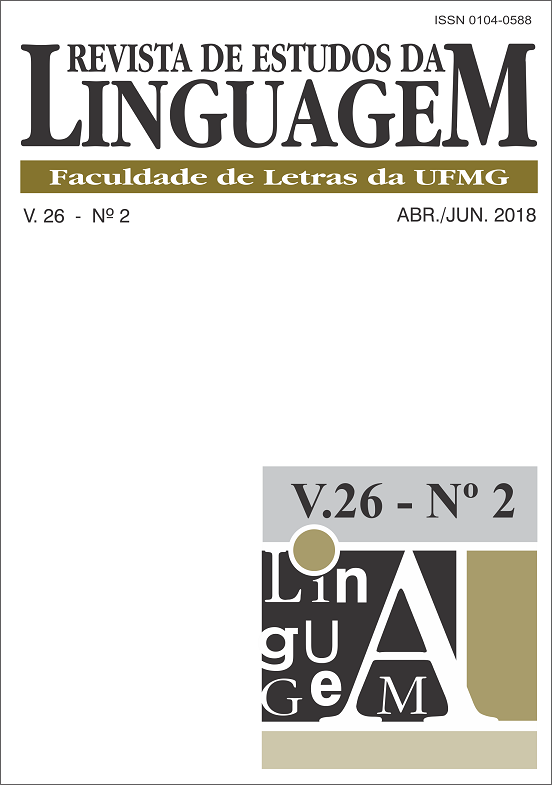Sujeitos -Wh e movimento para posições focais em sentenças infinitivas do português brasileiro
DOI:
https://doi.org/10.17851/2237-2083.26.2.945-979Palavras-chave:
Wh-subjects, non-finite clauses, focus features.Resumo
Resumo: Este trabalho põe em discussão a derivação de sentenças infinitivas que complementam verbos como ‘ver’ e ‘ouvir’ e que apresentam um sujeito-Wh. Como se vê na empiria, apenas as sentenças com um ‘stress’ focal no sintagma-Wh sujeito constituem uma derivação convergente. Argumenta-se que o que aparentemente se configura numa construção com Wh in situ é na verdade uma construção com movimento curto do Wh para o Spec-FocP na projeção focal interna da sentença matriz (assumindo a ideia de BELLETTI, 2004), e que, em português, o traço-Wh de sintagmas-Wh é valorado sincreticamente com o traço de foco em projeções focais, como propõe Kato (2004). Essa proposta ainda prevê que sentenças infinitivas são defectivas também quanto à projeção de uma periferia interna, fato que explica certa assimetria verificada nos dados.
Palavras-chave: sujeitos-Wh; infinitivas; traços de foco.
Abstract: This paper concerns the derivation of non-finite sentences that complement verbs of the type of ‘see’ and ‘hear’ and contain a Whsubject. Analyzed data evidence that sentences that carry a Wh-phrase with a stressed Wh-subject are convergent, contrary to sentences that do not. We argue that the apparent Wh in situ construction is in fact a sentence where some instance of Wh-movement takes place. The idea is that the Wh-phrase is moved to the Spec-FocP in the low IP area (in the terms of BELLETTI, 2004) and that in Portuguese the Wh feature of Whphrases is checked with a Focus feature in focus projections, according to Kato (2004). This proposal still states that sentences of an infinitival nature are defective also in terms of projecting an internal periphery, what seems to explain certain asymmetry facts observed in data.
Keywords: Wh-subjects; non-finite clauses; focus features.





